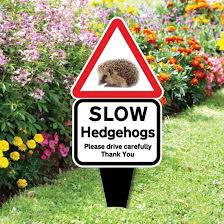I have nominated Gary Prescott for the ‘outstanding
commitment’ award at the JustGiving awards.
Many of my friends know Gary personally, some know of him through me and
a few will never have heard of him at all.
The following write-up is why I nominated him. Please read and, if you feel he’s worthy,
perhaps you could nominate him yourself, so he has a chance of picking up a
richly deserved accolade...
If I had to think of four words to describe Gary Prescott,
I would suggest ‘enthusiastic positive, selfless, hero’. But here’s a few more about this remarkable
man!
The History
I met Gary, by pure chance, on a train.
My husband and I were having a
chat with our seven year old lad, Jack, about green woodpeckers, when a voice
from a nearby seat spoke up,
“I’m sorry to interrupt, but it’s so wonderful to hear a youngster
talking about nature.” There started a
fascinating conversation about birdwatching, travelling and feather
collecting. Within a few stops we had learned
all about Gary and his passion for wildlife, charity and, in fact, life
itself. By the time we left the train,
Gary and Jack had become firm friends and our contact details exchanged. I’m certain that our chance encounter with
Gary contributed hugely to Jack’s tireless enthusiasm for birdwatching
throughout his childhood. Jack is now 18 and still sees Gary as one of
his great mentors and idols, even having only met him a handful of times.
For as long as I’ve known him and longer, Gary has been
raising money and awareness to various charities close to his heart. However, being the unique, creative and
somewhat bonkers man that he is, he’s never content to raise money in a
traditional way…
The Biking Birder
A keen birdwatcher and even keener environmentalist, Gary
uses his passions as the medium for his JustGiving fundraising. His adventures as ‘The Biking Birder’ have seen
him cycle around the UK, while ‘green’ birdwatching, over full 12 month periods.
Let’s think about this for a moment…Gary (a man who is
undeniably in his bus pass years) takes his trusty bike and a backpack, his
infamous tie and wellies, a camera, several cuddly mascots and a couple of
charity collection boxes. He sets off on
a journey of up to 13,000 miles of pedalling, using no carbon fuels. He has a target of recording as many species
of bird as possible in a year and, more importantly to him, getting as many donations
as possible into his JustGiving page for his charities. He sleeps in hostels, friends’ houses, bird
hides, church porches and under the stars, as he’d rather put money to charity
than spend it on his own comfort. And he
hasn’t done this just once but four times, in 2010, 2015, 2016 and 2023. As if that wasn't enough, Gary holds a record as the only person to have cycled to every RSPB and W&WT nature reserve in a calender year (that's over 230 sites)...and he's done it twice!
In 2018 Gary opted for an even more challenging Biking
Birder adventure; travelling with his trusty metal steed to Peru. He cycled and packrafted to the most remote
areas, spending time with indigenous communities and raising funds and
publicising the Chaskawasi-Manu project,
which provides vital protection, support and education for the village and
surrounding forests.
Gary’s Other Chosen Charities
Gary has supported many charities over the years. National charities like the RSPB, WWT, Asthma
UK and Birdlife International have all benefited from his travels around the
country. Boasting a significant presence
on social media, Gary writes a blog and posts regularly on Facebook and
Twitter, updating his followers and the general public on his progress
throughout his many adventures, always with a link to his JustGiving page. His heartfelt, humble and often very touching
posts inspire people to donate and his endless positive enthusiasm for all
things natural and all things green motivates people to keep giving.
But, the charity he feels most emotionally attached to is
ACORNS children’s Hospice Trust. Having
been ‘privileged’ to have taught children of all ages and abilities for 35
years, Gary feels strongly that he wants to give back to young people, so he supports
a wonderful charity that provides help for families coping with a life limiting
or life threatening illness of a child.
The charity is local to Gary’s home town and is also supported by his
other life-long love – the Aston Villa football team. In fact, Gary has been spotted more than once
in the official Acorn costume on the pitch at home matches!
What Now For Gary?
With his parents needing a bit more help these days, Gary
is staying local this year. Yet, even
this hasn’t stopped him from using his boundless energy for good. In March, Gary made his first ever skydive in
aid of Acorns hospice. He runs a
worldwide green birding group on Facebook; where like-minded ornithologists
share sightings, photographs and experiences.
He continues to support Acorns and is always looking for more ways to
give back – who knows what else he’ll get up to this year?
Gary’s commitment is unending and, quite frankly,
outstanding. After so many years of supporting
charities, he has absolutely no idea how much he’s raised - he’s stopped
counting – but I know it runs into thousands.
Having made such a difference to so many, it would be wonderful for Gary
himself to be acknowledged and celebrated.
2023 GoCardless JustGiving Awards | JustGiving and choose GaryPrescott2022

































